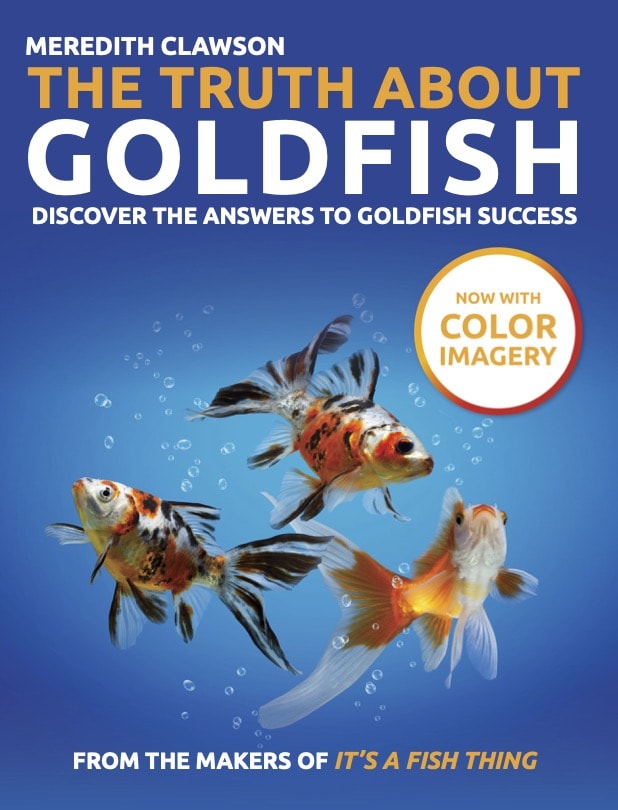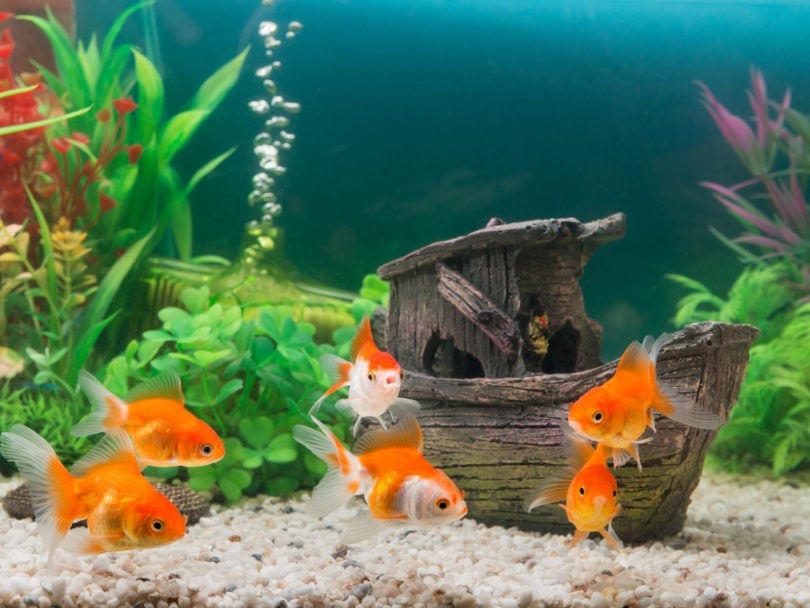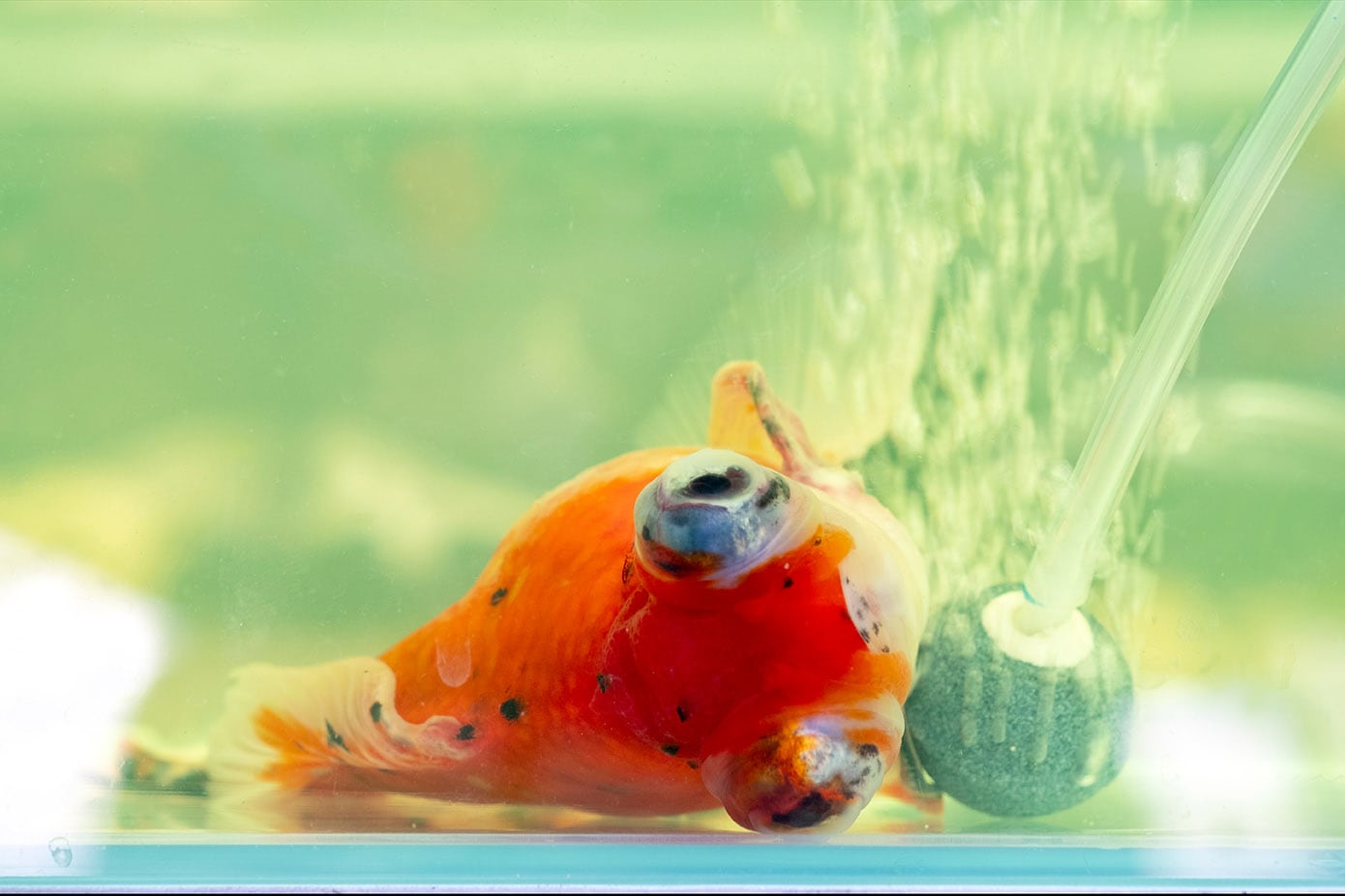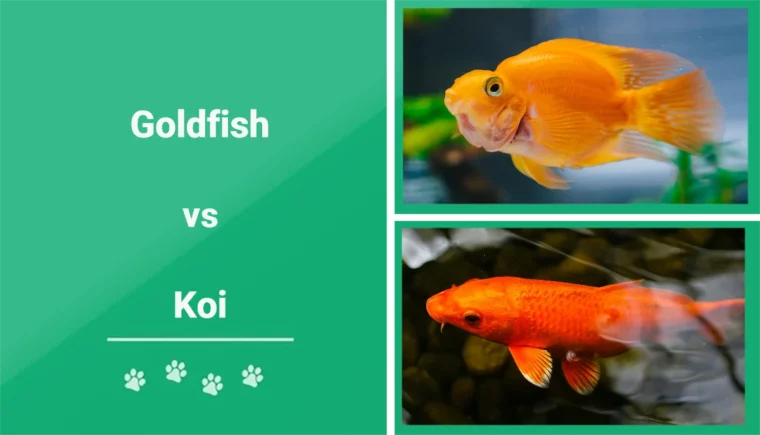
Koi and goldfish are two of the most popular fish choices for home ponds and aquariums, and both are strikingly beautiful animals. Koi and goldfish are fairly similar in appearance but have vastly different habitat needs, and you most likely won’t be able to keep them together. This means you’ll probably need to choose one for your home pond, and the decision can be a difficult one!
Despite their similarities, koi and goldfish are actually two different species, although both originated from the carp. In this article, we look at the main differences between koi and goldfish to help you decide which one is right for you. Let’s dive in!
Visual Differences

At a Glance
Koi Fish Overview
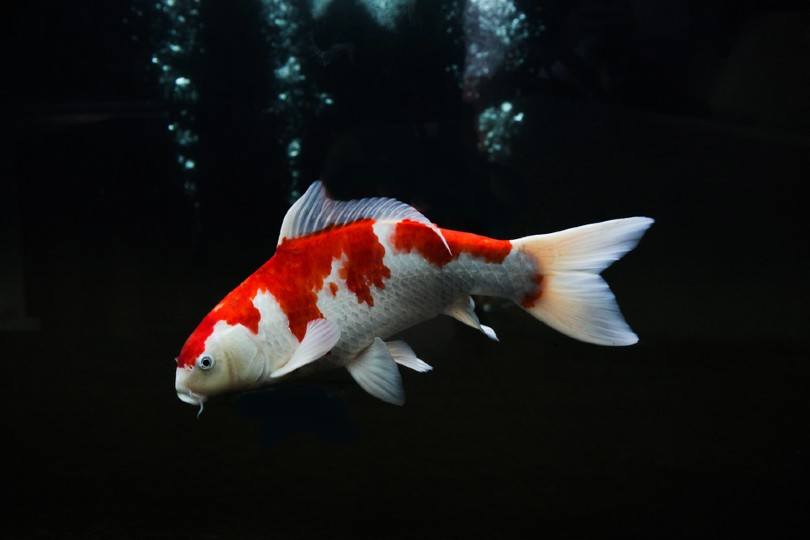
Originating in Japan, koi is a domesticated subspecies of the carp and bred for their unique and beautiful colors and patterns. In Japan, the koi symbolizes wealth, prosperity, love, success, and good fortune, and each variety of koi represents a different one of these aspects. There are over 20 different koi variations available that range widely in color, patterns, and types of scales.
One major difference between koi and goldfish is their lifespan: Koi can live for well over 100 years, and the oldest koi on record was an astonishing 226 years! In general, they have a typical lifespan of around 30–50 years. Koi are also highly intelligent and are said to be able to recognize their owner and can even be trained! They are also much larger than goldfish, growing to 3–4 feet in length and weighing in at an average of 35 pounds. You’ll need a great deal of space to house koi fish; the general rule of thumb is 500–1,000 gallons of water per koi.
Goldfish Overview
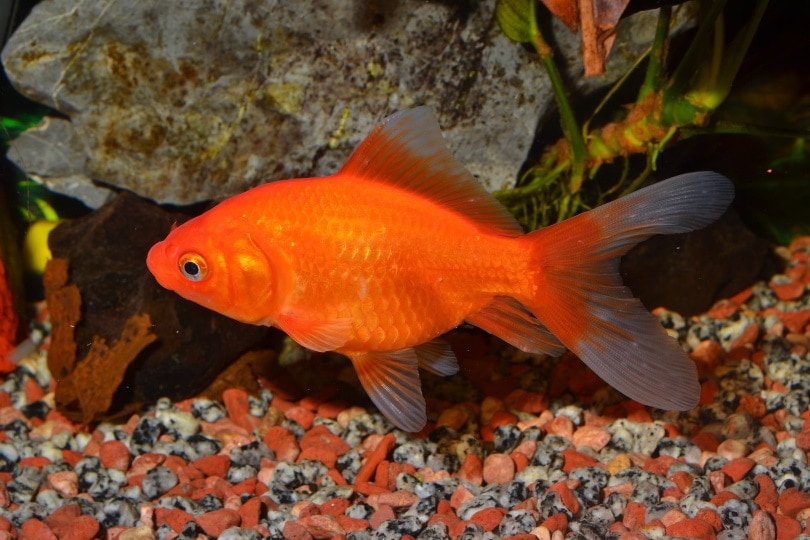
Like koi fish, goldfish are also descendants of the carp and were developed in China into the more ornamental fish that we see today. Goldfish come in a mind-boggling array of colors, sizes, and patterns and are mostly suited for indoor tanks, although some varieties can be housed in outdoor ponds too. There are around 300 different goldfish varieties, from the common goldfish to gorgeous “fancy” varieties that can fetch hundreds of dollars.
They are hugely popular pet fish because they are easy to look after and inexpensive to purchase. They are also small fish, with the biggest varieties only reaching around 18 inches long. Goldfish have a reputation for being short-lived, but in truth, they can live at least 20 years with the right conditions.
What Are the Differences?
Once you know what to look for, it’s fairly easy to tell the difference between a koi and a goldfish. Here are a few key differences to look for.
Size
This is the first and most important distinction between goldfish and koi. If you see a pond of fish and they are over 15 inches long, they are almost certainly koi. That said, goldfish in ponds can grow to much bigger sizes than if they are housed in an aquarium, and this is when it can become confusing to tell them apart.
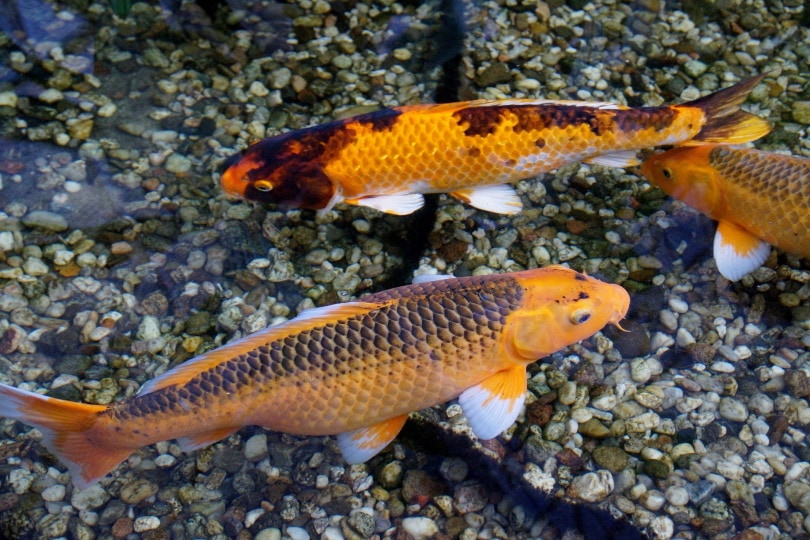
Color
If the size of the fish is not enough to tell them apart, the next indication is their coloring. While it is true that both goldfish and koi can come in a variety of colors and patterns, koi are found in a far larger range of colors. Koi are often seen in classic golden colorings but are also commonly found in red, white, blue, and black too. They can also have varying degrees of speckles, spots, or other patterning.
Barbels and bottom jaw
Another giveaway sign with koi fish is the barbels on their lower jaw. When the koi was developed from the carp, they kept these distinctive barbels, while goldfish did not. Koi also have pronounced lower jaws, while goldfish have more evenly rounded jaws. This can be another subtle yet helpful way to tell the two apart.
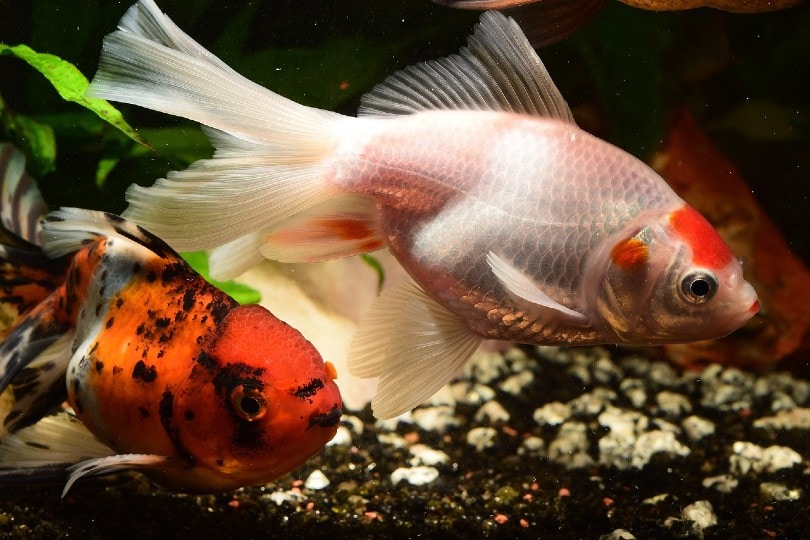
Koi and Goldfish Care Requirements
To decide whether a goldfish or koi is the right choice for you, you’ll need to consider the needs of each species and decide which is easiest for you to provide for or if you can provide what each fish needs at all. Each species has specific requirements, which we outline here.
Pond size and type
Koi carp can grow to large sizes and will need a fairly substantial pond to house them. One koi per 1,000 gallons of water is an absolute minimum because they produce a ton of biowaste. The smaller the body of water that you keep them in, the more advanced filtration that you’ll need to purchase. So, the bigger body of water that you can provide for them, the happier they’ll be and the easier it will be to care for them.
Goldfish, on the other hand, are far smaller fish and naturally need much less space to be happy. A good rule of thumb is one goldfish per 10–20 gallons of water, so you can easily keep goldfish indoors in an aquarium. While goldfish can be kept in outdoor ponds, they are far easier to care for indoors, especially during the winter months.

Equipment
Koi need water that is, at the very least, 2–3 feet deep. If you experience cold winters where you live, you’ll need an even deeper pond to ensure that it does not freeze over. More water obviously means more maintenance and a heating system during colder months. Depending on how many fish you have, you’ll need a powerful filtration system that can handle the biowaste and an air pump to oxygenate the water.
Goldfish also need specific temperature requirements, but this is easier to achieve in an indoor aquarium. The filtration, aeration, and temperature regulation of a goldfish tank doesn’t cost that much and is comparatively inexpensive to run.
Feeding
Both koi and goldfish need to be fed two to four times per day, but as they are smaller, goldfish will be cheaper to feed. Feeding an entire pond of koi fish that often can quickly get expensive, especially with high-quality koi food.
Overall, the feeding requirements of goldfish and koi are fairly similar, but koi are larger and require more food, which produces more waste and more maintenance overall.
Many goldfish die as a result of improper feeding, diet, and/or portion sizes – which can be easily prevented by proper education.
That's why we recommend the best-selling book, The Truth About Goldfish, which covers everything about goldfish nutrition, tank maintenance, illnesses & more! Check it out on Amazon today.
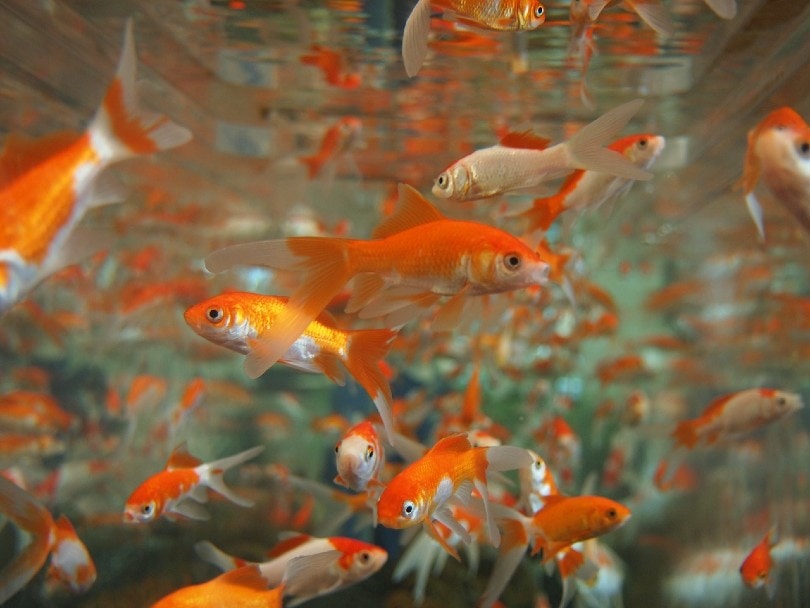
Conclusion
Koi and goldfish both make wonderful pets and are a joy to watch. Of course, which one is right for comes down to personal preference and whether you can provide for their needs. In general, goldfish are smaller and easier to house, care for, and feed. They also can be happily housed in a small aquarium in your home, and you don’t need any outdoor space to keep them.
Koi, on the other hand, require a large outdoor pond to live in, which requires an expensive filtration and aeration system. The more koi you have, the more space and water you’ll need, and the costs can quickly add up. Koi have long lifespans and are thus a massive responsibility, and their maintenance and feeding costs are typically far more than those of goldfish.
If you live in an apartment or a home without much backyard space, a goldfish is naturally the best choice for you. If you have the space in your yard to build a pond, a koi is a beautiful pet to have too!
Next on your reading list:
- World’s Most Expensive Koi Fish Sells for Millions of Dollars
- Gold Koi Fish: Facts, Origin & History (With Pictures)
Featured Image Credit: Top – Chait Goli, Pexels | Bottom – Laura Porter, Pexels



